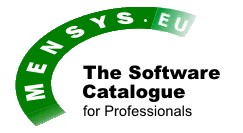Introducing MAXQDA 2022
 | |
Creative Data AnalysisWe are thrilled to share a new milestone in the development of MAXQDA: The release of MAXQDA 2022 before the end of the year! This new release stays true to the central mission of our journey of over 30 years: To provide you – researchers around the globe – with software that optimally supports the organization and analysis of your data, and the publication of your findings. MAXQDA 20222 will make your work even more effective, efficient and joyful – it comes with sixty new features in a new fresh look – among them several innovative analysis tools. | |
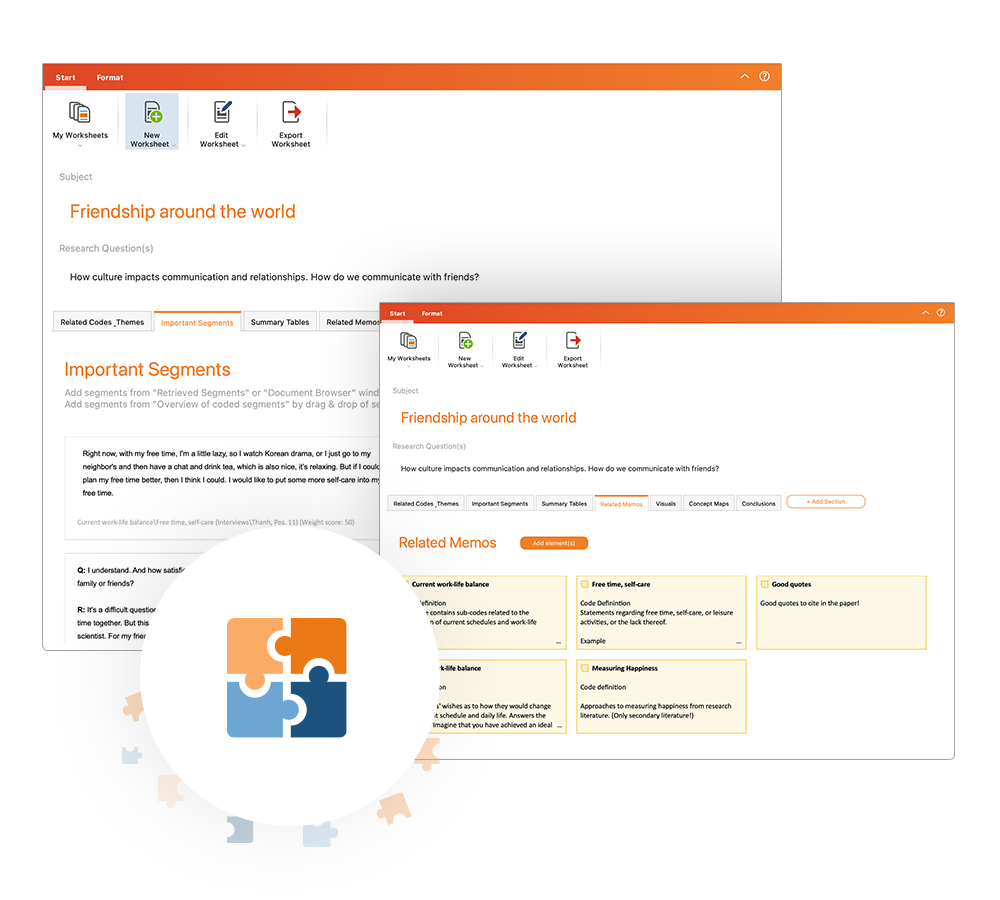 | Questions – Themes – Theories (QTT)Where everything comes togetherAn innovative workspace to gather important visualizations, notes, segments, and other analytical results! QTT will support you during the analysis phase after coding and is the perfect place to collect relevant insights and develop new theories. Worksheets: Create worksheets for each important topic and fill them with codes, quotations, memos, visualizations, concept maps, and summary tables. Conclusions: Organize your material by topic or research question and add conclusions or insights as you go. Send to: Send finished visualizations and concept maps to a QTT worksheet and store analytical findings by topic or research question. Export: Export everything you have gathered for one research question at once to finalize your reports. |
Identify patternsThe Profile Comparison ChartVisually compare documents, speakers, document groups or sets. Explore patterns in code assignments and variable values and create typologies. Codes & Variables: Select which codes and variables to display in the visualization. Manually rearrange the order in which variable values are displayed. Colors: Use colors to visually identify similar or opposite groups. Color can be assigned automatically by document color, by variable values, or by document group. Frequency options: While analyzing coding patterns for documents groups and sets, choose between the sum, mean, or median of coded segments. | 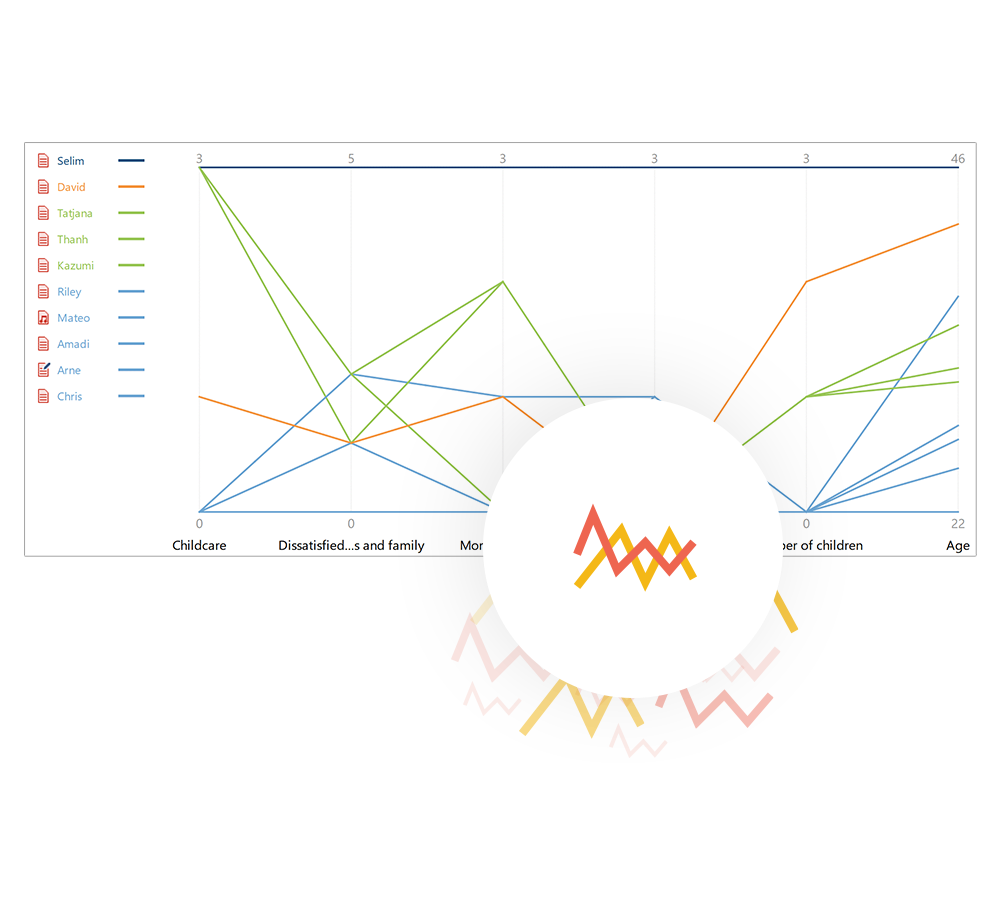 |
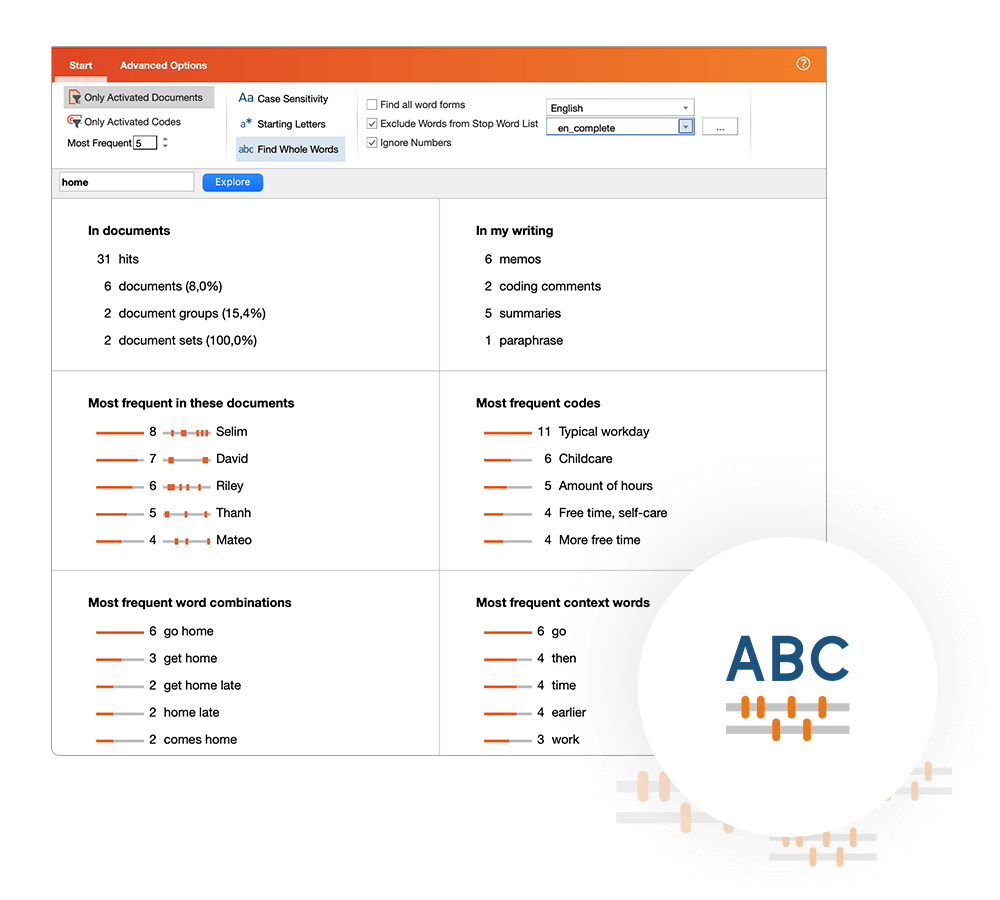 | Sometimes it comes down to just one wordThe Word ExplorerWord Occurrences: Understand where and how often a word or phrase occurs in your documents or in your own writing. Word Context: Find out which codes are most frequently applied to the search item. See which words the search item is most frequently combined with, and which words appear within a set number of words before and after the search item. Interactivity: Elements are interactive so you can jump from the dashboard to view the sources or complete frequency lists. |
Your work is importantImport text highlighting and comments from Word & PDFImport highlighting as codes: MAXQDA recognizes color highlighting in Word or PDF documents and automatically codes the highlighted passages, so you can seamlessly continue your work in MAXQDA. Import comments as memos: Comments and comment threads are imported into MAXQDA as memos and can be displayed right next to your documents. | 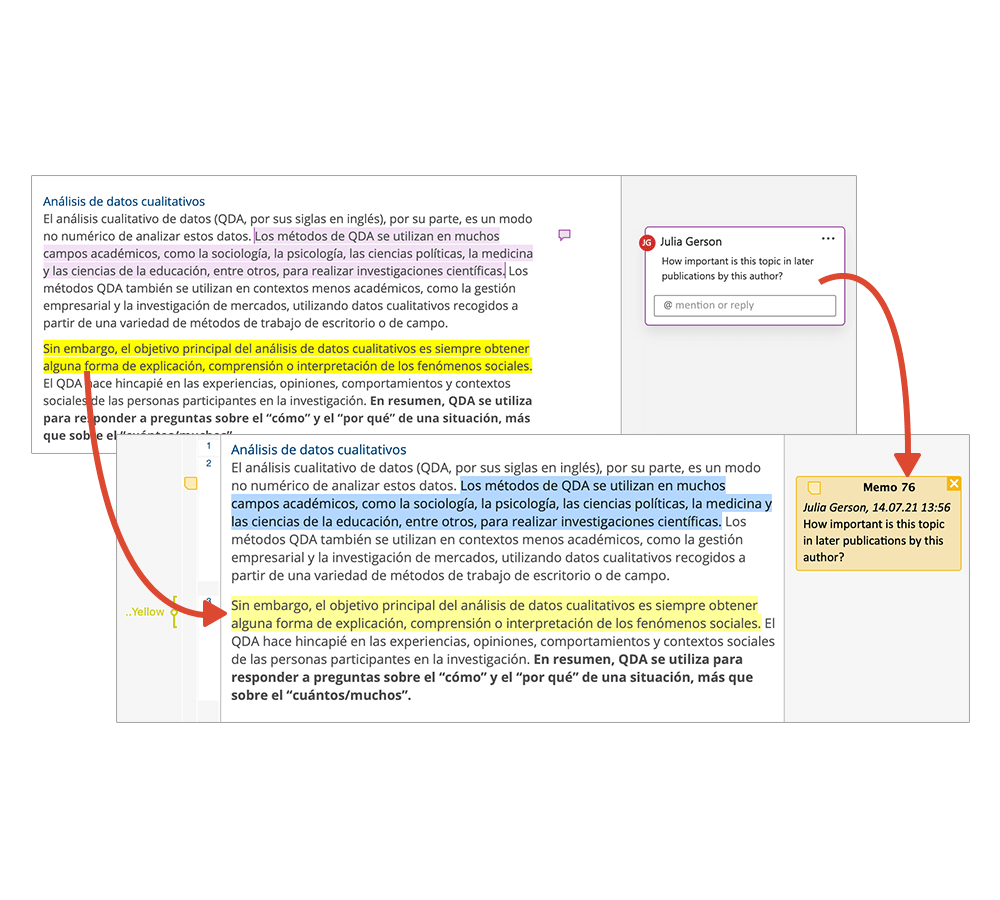 |
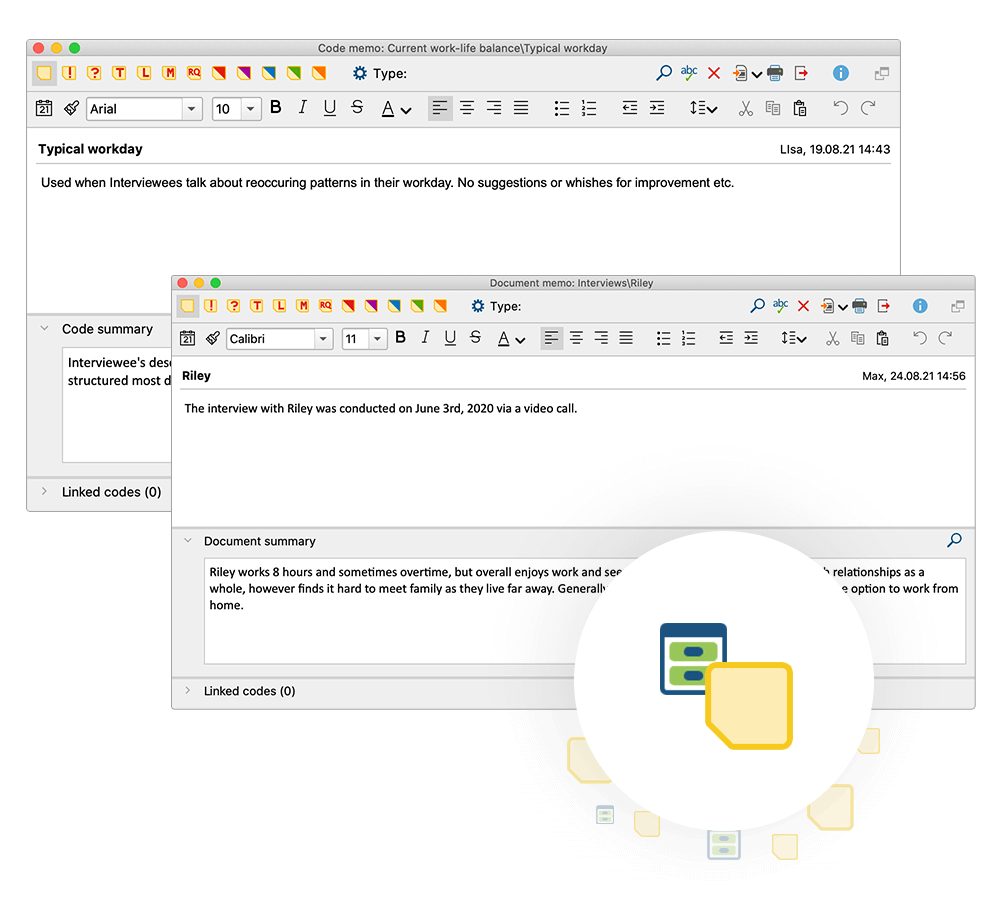 | Advanced summary functionsThe new Code & Document Summary section in MemosCase Summary: Use the new summary section in document memos to summarize the main aspects of a case. Topic Summary: Use the new summary section in code memos to summarize the main aspects of a topic. Summary Table integration: Already summarized coded segments by topic and case? Call up and write case/topic summaries directly in a summary table. |
No words neededThousands of new emojis to code withChoice & Diversity: You can now code your data with the same meaningful and diverse symbols that you love to use on your smartphone. Choose from more than 3,000 symbols including gender and skin tone variations Windows & Mac: Perfect integration into your OS. With native emoji styles. Visualize with emojis: Emojis sometimes say more than a thousand words! Emoticodes are integrated into your MAXQDA visualizations and diagrams. |  |
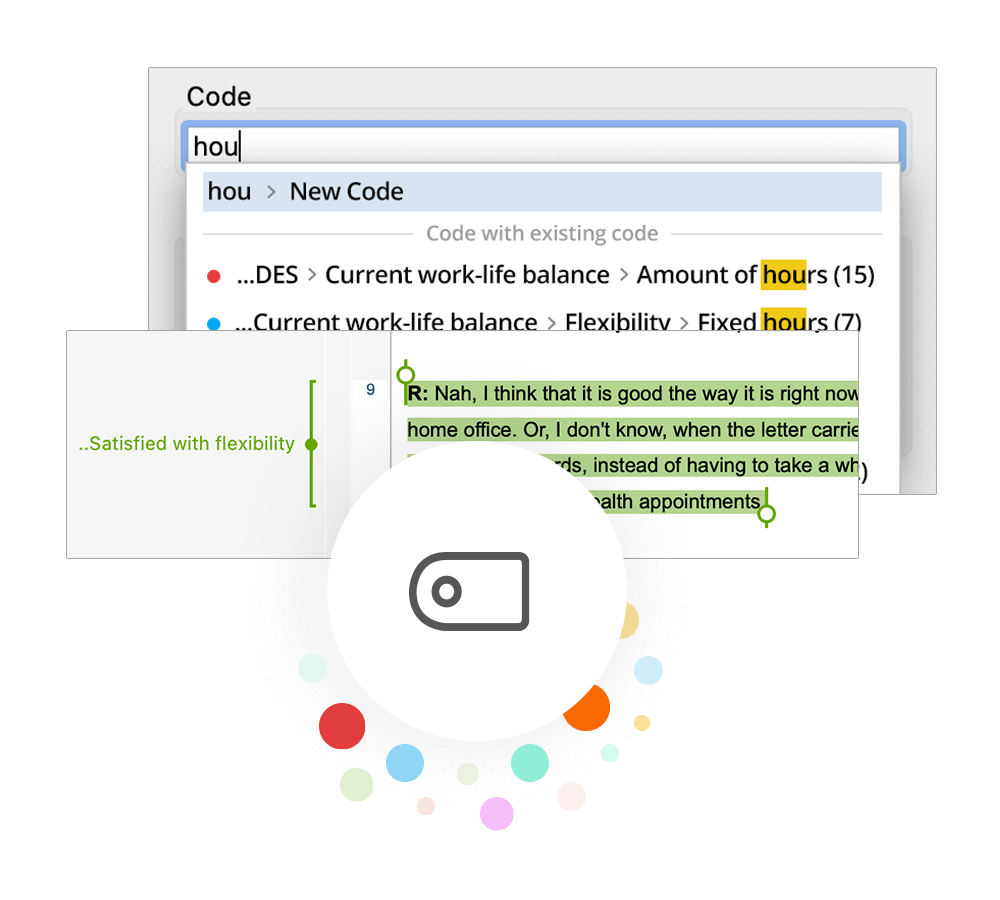 | Boost your coding workflowCode name suggestions & quick resizeCode name suggestions: MAXQDA now suggests existing code names when you apply a new code to your data. Avoid duplicate code names in open coding or use this feature to quickly find and apply an existing code. Resize coded segments: Quickly resize coded segments with the new code grabbers that are displayed at the beginning and end of a segment by clicking on the coding stripe. |
Fast, flexible, transparentThousands of new emojis to code withThe enhanced Focus Group ImportMAXQDA’s new focus group import integrates multiple functions in an all-in-one import dialogue, making the import of focus group transcripts more flexible and faster than ever before. Select speakers: MAXQDA shows all identified speakers in your transcript so you can decide which speakers to code or ignore. Combine: Check the list of speaker names and combine different spellings for the same person into one speaker if necessary. | 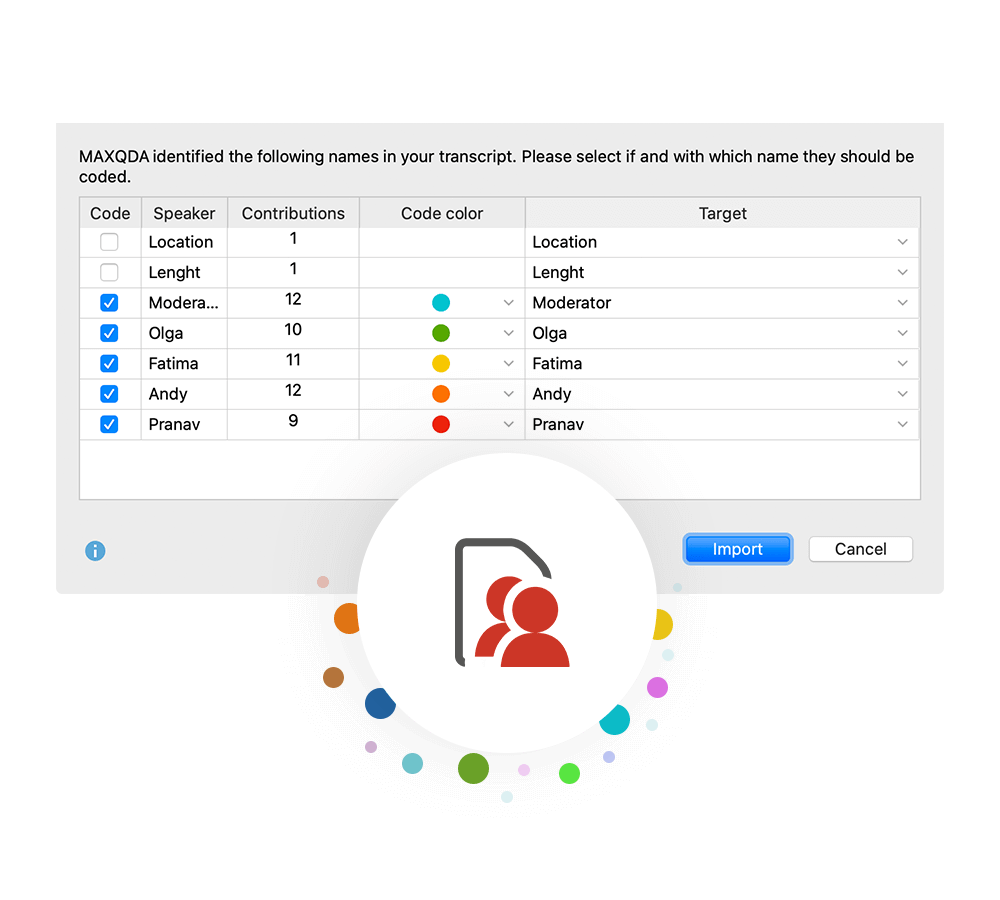 |
 | Dive deeper into your survey dataNew tools for analyzing open-ended questionsAnalyzing answers to open-ended questions in MAXQDA has always been a strong point. The new responses workspace adds powerful features to work with survey data. Search and Autocode: Search for words or phrases and auto-code responses, search hits, sentences, or paragraphs. Auto-code with Dictionary: Access your dictionaries to auto-code responses, search items, sentences, or paragraphs with dictionary categories (available in MAXQDA Plus or Analytics Pro). Statistical Analysis: After coding your responses, view them in the Stats module to statistically analyze the resulting code frequencies alongside standardized data (available in MAXQDA Analytics Pro). |
A new, powerful workspaceParaphrase media files & categorize paraphrasesParaphrase media files: You can already paraphrase text and image segments in your own words. With MAXQDA 2022, you can now write paraphrases in your videos and audio recordings to focus on interactions, words, a single person, or other interesting aspects. Categorize paraphrases: Easily organize and categorize your paraphrases into codes in the revamped Paraphrases workspace- now with advanced search and auto-code functionality. | 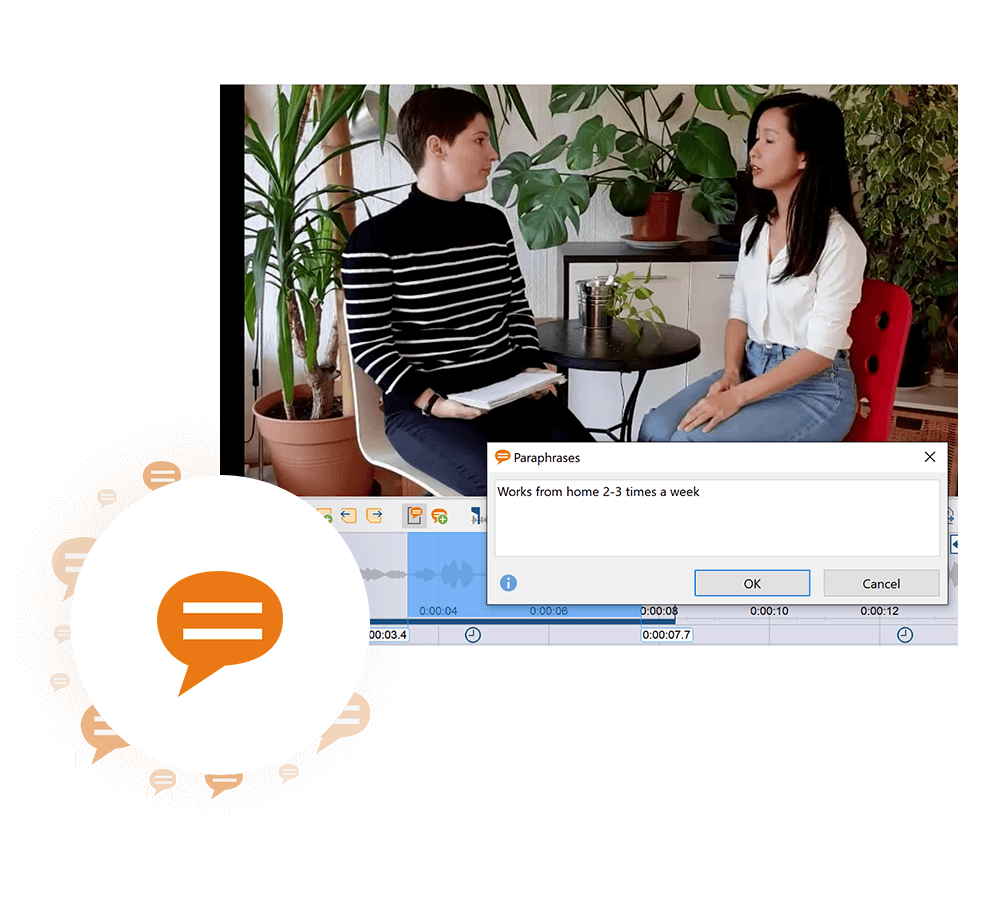 |
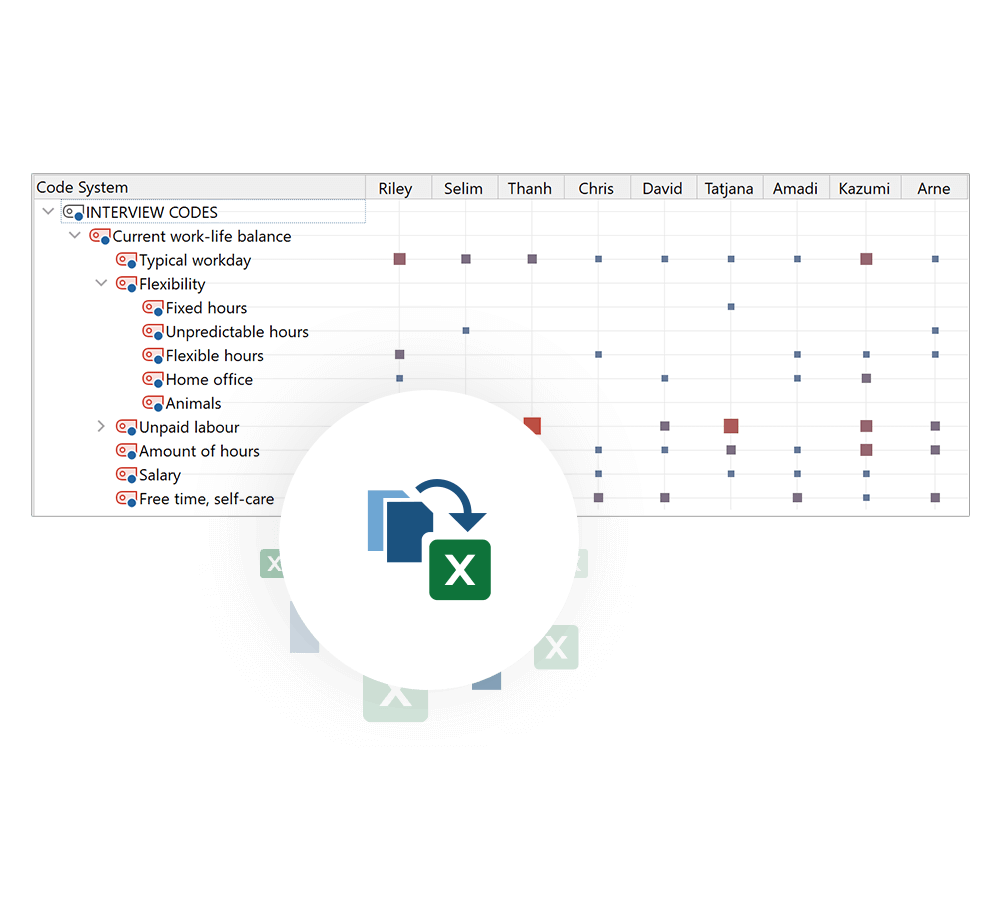 | New ways to share and exportAdjacency Matrix & Document Profile TableNetwork Analysis: Export code relationships from MAXQDA as an Adjacency Matrix, which is a common format for a network analysis. Use this new export method to explore and visualize your data with specialized network analysis tools. Document Profiles: Export a Document Profiles table with important information about selected documents. For each document, the table includes the document memo, a selection of variables, and code frequencies. |
Additional Module: MAXQDA TeamCloud | |
Analyze as a teamParaphrase media files & categorize paraphrasesSecure & seamless cloud collaborationIt has always been easy to collaborate as a team in MAXQDA. The new Teamwork Cloud integrates collaboration even deeper into your workflow! Share files with your team via a secure cloud space, invite colleagues to contribute their work, analyze offline, and decide when and what to import from your team members. Collaboration without the hassle: Distribute projects and external documents, view your team’s latest activity, and get notified of new imports or downloads within MAXQDA. Let your software handle team communication and file management so you can focus on your analysis. Work offline & share online: Work on local project copies simultaneously, even when you’re offline. You only need to connect to the Internet at the beginning and end of a project cycle to download and upload files. Import options & transparency: Streamline imports of team members’ work with new import options. You can now also access your import history in merge notes. Team logbook: Collect important notes and project information in a shared team logbook that everyone can contribute to in real-time. | 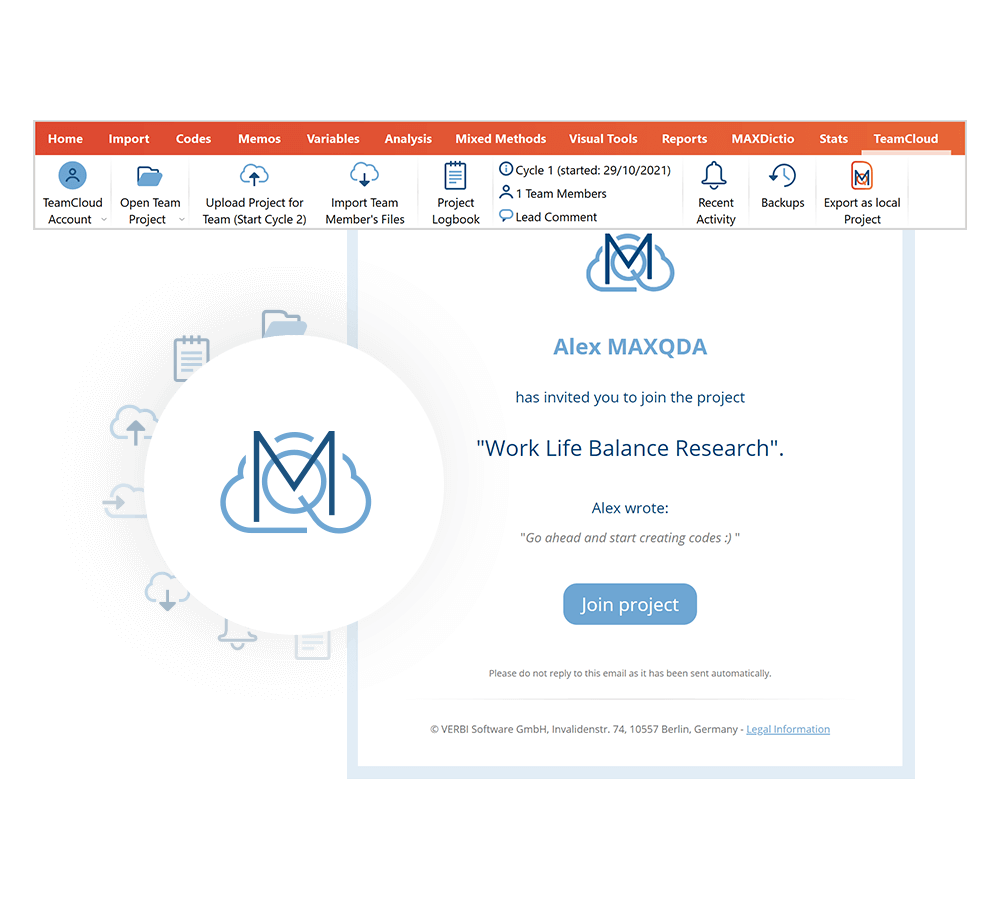 |
Further Improvements | |
Codes & Coding
Memos
Word-based Analysis with MAXDictio
| Documents
Visual Tools
Analysis
Other
|
